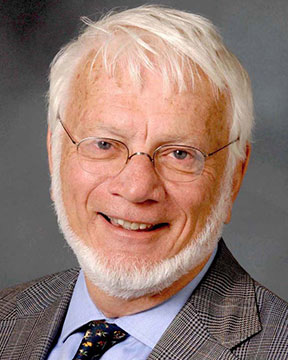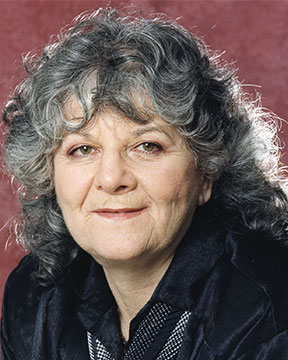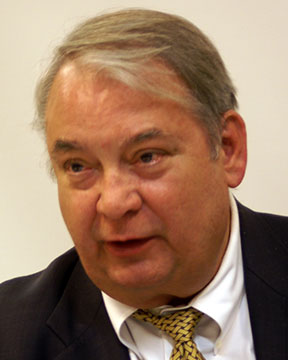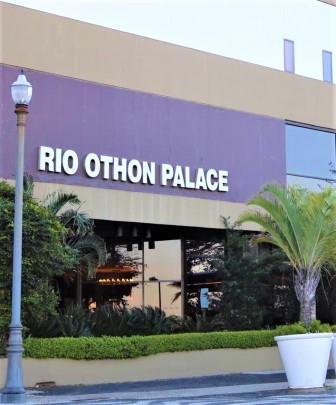ORALS
SESSION: AdvancedMaterialsMonPM1-R6
| 4th Intl. Symp. on New and Advanced Materials and Technologies for Energy, Environment and Sustainable Development |
| Mon Nov, 5 2018 / Room: Guaratiba (60/2nd) | |
| Session Chairs: Janina Molenda; Michael Zharnikov; Session Monitor: TBA |
14:00: [AdvancedMaterialsMonPM105] Keynote
Fabrication and Potential Applications of Novel Poly(ethylene glycol) Hydrogel Films and Nanomembranes Michael
Zharnikov1 ;
1Heidelberg University, Heidelberg, Germany;
Paper Id: 74
[Abstract] Whereas biorepulsive oligo- and poly(ethylene glycols) (OEGs and PEGs) are widely used for different applications, they have not been utilized yet as materials for free-standing nanomembranes. In this context, I discuss fabrication and potential applications of novel PEG hydrogel films and membranes, abbreviated as PHFs and PHMs, respectively. They were prepared by thermally activated crosslinking of amine- and epoxy-terminated, star-branched PEG oligomers, and characterized by tunable thicknesses of 4-300 nm [1]. These systems possess a variety of useful properties, including biocompatibility, robustness, and extreme elasticity [1,2]. They can serve as a basis for hybrid materials, advanced nanofabrication, and lithography, using electron irradiation and ultraviolet light as writing tools [1-3]. They can also be used as highly sensitive elements in MEMS as well as in humidity sensors and moisture-responsive nanoelectronic devices, relying on optical or resistive transduction technique. In particular, their resistance changes by ca. 5.5 orders of the magnitude upon relative humidity variation from 0 to 100%, which is an unprecedented response for homogeneous materials [4]. The PHFs and PHMs are also able to host protein-specific receptors, providing, at the same time, protein-repelling and humidity-responsive matrix with a characteristic mesh size up to 8.4 nm [5]. A noticeable grafting density of the test avidin protein, specifically attached to the biotin moieties, coupled to the free amine groups in the PHMs, was achieved, whereas non-specific protein adsorption was efficiently suppressed. The engineering of PHMs with biomolecule-specific receptors and their loading with biomolecules are of potential interest for sensor fabrication and biomedical applications, including tissue engineering and regenerative therapy.
References:
[1] N. Meyerbröker, T. Kriesche, M. Zharnikov, ACS Appl. Mater. Interfaces 5 (2013) 2641-2649.
[2] N. Meyerbröker, M. Zharnikov, Adv. Mater. 26 (2014) 3328-3332.
[3] N. Meyerbröker, M. Zharnikov, ACS Appl. Mater. Interfaces 6 (2014) 14729-14735.
[4] M. Khan, S. Schuster, M. Zharnikov, J. Phys. Chem. C 119 (2015) 14427-14433.
[5] M. Khan, S. Schuster, M. Zharnikov, Phys. Chem. Chem. Phys. 18 (2016) 12035-12042.
SESSION: AdvancedMaterialsMonPM1-R6
| 4th Intl. Symp. on New and Advanced Materials and Technologies for Energy, Environment and Sustainable Development |
| Mon Nov, 5 2018 / Room: Guaratiba (60/2nd) | |
| Session Chairs: Janina Molenda; Michael Zharnikov; Session Monitor: TBA |
14:25: [AdvancedMaterialsMonPM106] Invited
A Concept of Embedded Dipole in Interfacial Engineering and its Applications in Organic Electronics Michael
Zharnikov1 ;
1Heidelberg University, Heidelberg, Germany;
Paper Id: 75
[Abstract] The energy level alignment between the metal electrodes and adjacent organic semiconductor, as well as between the buffer layers and adjacent electrode/active layer is a key issue in organic electronics and photovoltaics. A frequently used approach in this context is the introduction of a suitable interfacial dipole by modification of the electrodes/buffer layers with a self-assembled monolayer (SAM). For this purpose, SAMs are usually decorated with a specific dipolar terminal group, attached to the molecular backbone, which, however, can affect the growth of organic semiconductor and be easily modified itself, thus distorting the desirable energy level alignment. An alternative novel concept involves embedding of a dipolar functional group into the backbone of the SAM constituents, thus decoupling dipole control and interfacial chemistry [1,2]. The validity of this concept is demonstrated by the example of several model SAMs, containing embedded dipolar groups with different chemical compositions and orientations. Combining molecules with oppositely oriented dipolar groups in a mixed SAM allows continuous variation of the interfacial dipole in a broad range, enabling its exact adaptation to the requirements of a particular device. Using a specific spectroscopic signature of the embedded groups, within the concept of electrostatic shift, the morphology of the mixed films can be precisely monitored down to the molecular scale by X-ray photoemission spectroscopy [3,4]. As an example of potential usefulness of this novel class of SAMs in organic electronics and photovoltaics, their application in organic field-effect transistors is demonstrated, resulting in decrease of the contact resistance by ca. three orders of magnitude accompanied by significant improvement in the performance and stability of the devices. As a continuation of these activities, application of novel dipolar SAMs in organic solar cells is now under consideration [5].
References:
[1] T. Abu-Husein, S. Schuster, D. A. Egger, M. Kind, T. Santowski, A. Wiesner, R. Chiechi, E. Zojer, A. Terfort, M. Zharnikov, Adv. Funct. Mater. 25 (2015) 3943-3957.
[2] O. M. Cabarcos, S. Schuster, I. Hehn, P. P. Zhang, M. M. Maitani, N. Sullivan, J.-B. Giguère, J.-F. Morin, P. S. Weiss, E. Zojer, M. Zharnikov, D. L. Allara, J. Phys. Chem. C 121 (2017) 15815-15830.
[3] T. C. Taucher, I. Hehn, O. T. Hofmann, M. Zharnikov, E. Zojer, J. Phys. Chem. C 120, (2016) 3428-3437.
[4] I. Hehn, S. Schuster, T. Wachter, T. Abu-Husein, A. Terfort, M. Zharnikov, E. Zojer, J. Phys. Chem. Lett. 7 (2016) 2994-3000.
[5] Q. Zhang, W.-T. Wang, C.-Yu Chi, T. Wachter, J.-W. Chen, C.-Yi Tsai,Y.-C. Huang, M. Zharnikov, Y. Tai, and D.-J. Liaw, Energy Environ. Sci. 11 (2018) 682-691.



















